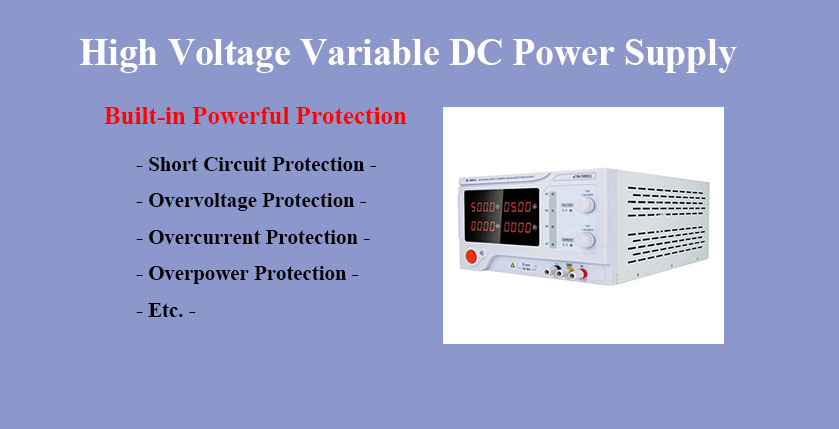The high voltage DC power supply is widely used industry, scientific research and other fields, typically delivering high voltages with low current outputs. Some devices that use high voltage power supplies, such as the generator’s speed control board, will not work properly if there is an abnormality in the high voltage power supply.
To ensure the safe and stable operation of high voltage DC power supplies, we will discuss protection mechanisms against transient and steady-state short circuit currents. These protection mechanisms help prevent damage to the variable DC power supply due to short circuits.

High Voltage Power Supply Transient Current Protection
Transient short circuit current refers to the high current generated due to a momentary short circuit. If this transient current exceeds the rated current of the high voltage power supply, it can damage the electronic and some electrical components of the power supply, thereby affecting its normal operation. To protect the DC high voltage power supply, a specialized transient short circuit current protection mechanism has been developed.
The core of this protection mechanism is triggered when a short circuit occurs and the current exceeds the rated value. A signal sent by a controller activates the protection mechanism, which then limits the magnitude of the short circuit current. This mechanism involves analyzing the actual output voltage from the high voltage power supply along with the corresponding signals. Through this analysis, the short circuit current is controlled, thereby protecting the DC variable power supply.
High Voltage Power Supply Steady State Current Protection
Steady-state short circuit current refers to the current that arises when there is a fault in the internal circuitry of the high voltage DC power supply under normal operating conditions. Although steady-state short circuit currents are typically small, they can cause damage to the power supply if they exceed the rated current. In such cases, the steady-state short circuit current protection mechanism becomes active.
The core of this protection mechanism is a current control circuit that limits the output current of the variable voltage power supply. If a fault occurs within the internal circuitry, the output current is restricted to prevent excessive short circuit current. Additionally, high voltage DC power supplies can be equipped with current protectors that monitor the size of the output current. If the current exceeds the rated value, it automatically cuts off the current to protect the high voltage power supply.
In Conclusion
In the use of high voltage power supplies, both transient short-circuit current and steady-state short-circuit current are critical issues. Through mechanisms for transient and steady-state short-circuit current protection, we can ensure the normal operation of the high voltage DC power supply, preventing excessive short-circuit currents that could otherwise disrupt its proper functioning.
If you’re in the market for a high-quality high voltage DC power supply, consider the ETOMMENS High Voltage Variable DC Power Supply. Our power supply not only features short-circuit protection but also includes other protective functions such as Overvoltage Protection (OVP), Overcurrent Protection (OCP), and Overtemperature Protection (OTP). These functionalities safeguard against potential damage scenarios.
